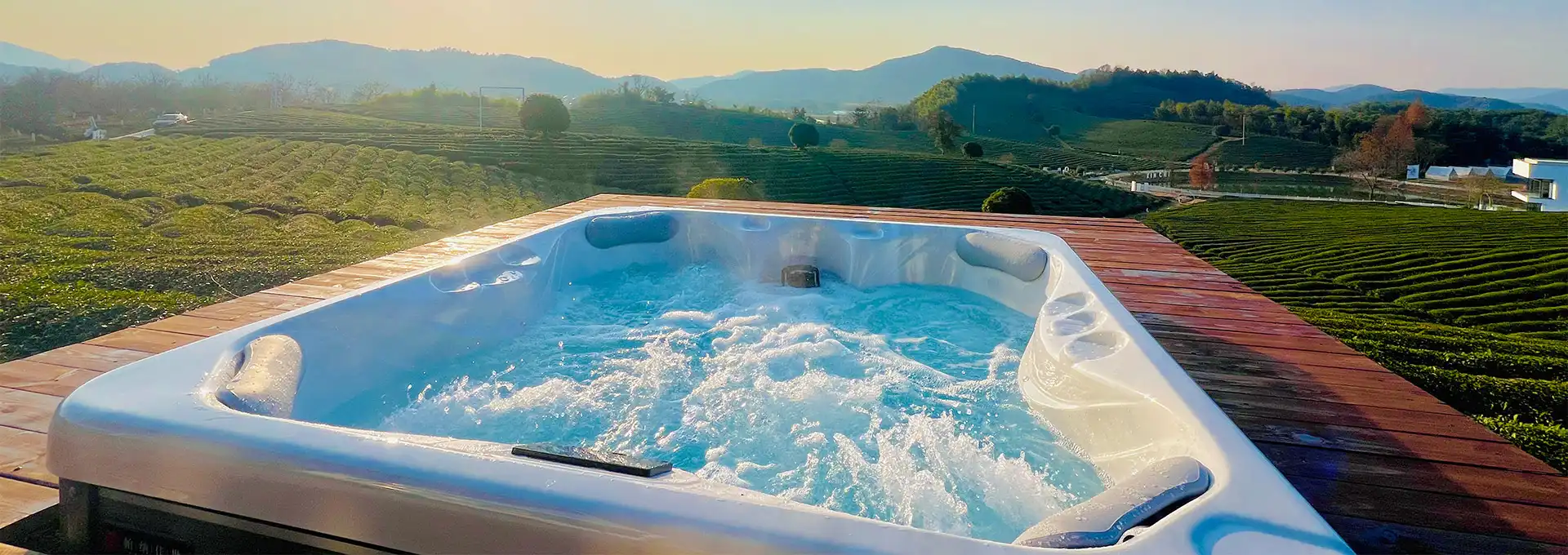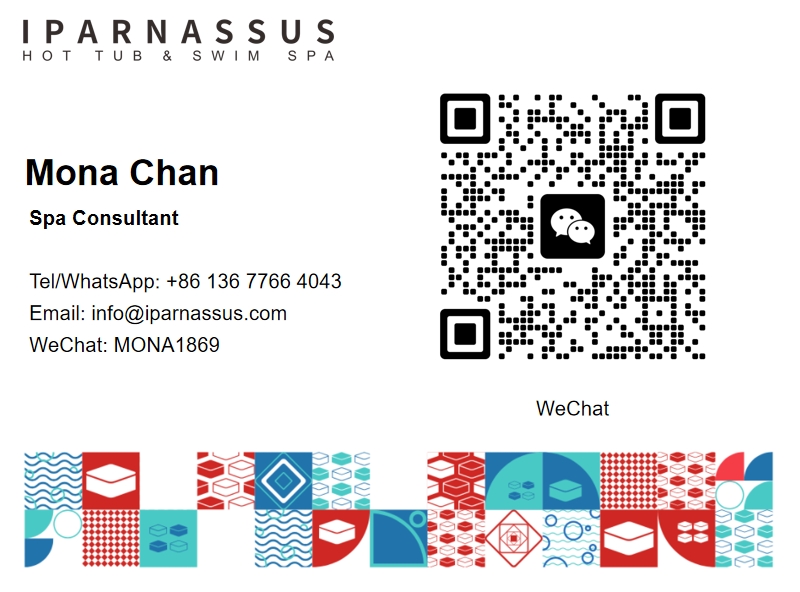What does e02 mean on a hot tub?
2025-07-07 22:09:36
When you see an "e02" error code displayed on your hot tub's control panel, it typically indicates a flow or circulation problem within your spa system. This error code is one of the most common diagnostic messages that hot tub owners encounter, and understanding its meaning is crucial for maintaining your spa's optimal performance. The e02 code generally signals that your hot tub's sensors have detected insufficient water flow through the heating system, which can prevent proper heating and filtration. This issue requires immediate attention to prevent potential damage to your hot tub's components and ensure safe operation for users.
How do you fix a hot tub that won't heat properly?
Check and Clean Your Hot Tub Filter System
The most common cause of heating issues in any hot tub is a dirty or clogged filter system. When filters become saturated with debris, oils, and contaminants, they restrict water flow and trigger error codes like e02. Remove your hot tub filters and inspect them thoroughly under good lighting. If the pleats appear discolored, have a slimy texture, or smell unpleasant, they need immediate cleaning or replacement. Clean reusable filters using a filter cleaning solution or a mixture of water and filter degreaser, allowing them to soak for several hours before rinsing thoroughly. For optimal hot tub performance, rotate between two sets of filters, cleaning one set while the other is in use. This practice ensures your hot tub maintains consistent water circulation and prevents recurring heating problems.
Inspect Water Circulation and Pump Operations
Your hot tub's circulation system is the heart of its heating mechanism, and any disruption can cause temperature regulation problems. Check if your circulation pump is running correctly by listening for unusual noises, vibrations, or complete silence when it should be operating. Air locks in the plumbing system can also prevent proper water flow, causing your hot tub to display error codes and fail to heat effectively. To eliminate air locks, turn off power to your hot tub, remove the filter, and use a garden hose to fill the filter housing completely before reinstalling the filter and restoring power. Additionally, ensure your hot tub's water level is adequate, as low water levels can cause pumps to draw air instead of water, leading to circulation problems and heating failures.
Verify Electrical Connections and Control Settings
Sometimes hot tub heating issues stem from electrical problems or incorrect control panel settings rather than mechanical failures. Check your hot tub's main electrical panel to ensure no breakers have tripped, and verify that the GFCI outlet is functioning properly. Examine the control panel settings to confirm the temperature is set correctly and that heating mode is activated. Many modern hot tubs have economy modes or sleep settings that can affect heating performance, so review your owner's manual to understand all available options. If your hot tub continues to show heating problems after addressing these basic issues, the problem may involve more complex electrical components like heating elements, temperature sensors, or control boards that require professional diagnosis and repair.
What are the most common hot tub error codes?
Flow and Circulation Related Error Codes
Flow-related error codes represent the most frequent diagnostic messages in hot tub systems, with e02 being just one example of this category. These codes typically indicate problems with water movement through your hot tub's plumbing system, which can result from various issues including clogged filters, air locks, or pump malfunctions. Other common flow error codes include FLO, FL1, FL2, and dr, each representing different aspects of circulation problems. Understanding these codes helps hot tub owners identify whether the issue involves the main circulation pump, therapy pumps, or specific zones within the spa system. When your hot tub displays any flow-related error code, immediate action is necessary to prevent damage to heating elements and ensure continued safe operation of your spa system.
Temperature and Sensor Error Codes
Temperature-related error codes in hot tubs indicate problems with heating elements, temperature sensors, or the control system's ability to regulate water temperature accurately. Common temperature error codes include OH (overheat), HL (high limit), SN (sensor), and various numbered codes that correspond to specific temperature sensor malfunctions. These codes often appear when your hot tub's water temperature exceeds safe operating limits, when sensors malfunction, or when there's a communication error between temperature sensors and the control system. Understanding these codes helps hot tub owners determine whether the problem requires simple recalibration, sensor replacement, or more extensive repairs to heating elements or control boards. Prompt attention to temperature error codes is essential for maintaining safe hot tub operation and preventing potential damage to users or equipment.
System and Communication Error Codes
Modern hot tubs feature sophisticated control systems that monitor various operational parameters and display specific error codes when communication problems occur between different components. These system error codes can indicate issues with control boards, wiring connections, or software glitches that prevent proper spa operation. Common system error codes include various alphanumeric combinations that correspond to specific circuit boards, communication protocols, or system functions. When your hot tub displays system error codes, troubleshooting often involves checking electrical connections, resetting the control system, or updating firmware if applicable. Understanding these codes helps hot tub owners determine whether the issue can be resolved through simple troubleshooting steps or requires professional technical support for more complex electronic repairs.
Why is my hot tub not circulating water?
Blocked or Dirty Filtration Components
Water circulation problems in hot tubs most commonly result from compromised filtration systems that cannot maintain adequate water flow throughout the spa. When filters become saturated with debris, body oils, lotions, and other contaminants, they create significant resistance to water movement, causing circulation pumps to work harder and potentially triggering protective shutdowns. This situation not only prevents proper water circulation but also leads to poor water quality, inadequate heating, and potential damage to pump components. Regular filter maintenance is essential for maintaining proper hot tub circulation, including weekly rinsing, monthly deep cleaning, and periodic replacement based on usage levels and water conditions. Additionally, check for debris in the skimmer basket and ensure that all filter housings are properly sealed to prevent air leaks that can disrupt circulation patterns.
Pump and Motor Mechanical Issues
The circulation pump is the primary component responsible for moving water through your hot tub's plumbing system, and mechanical problems with this equipment can completely stop water circulation. Common pump issues include worn impellers, damaged seals, motor bearing problems, or complete motor failure. Signs of pump problems include unusual noises during operation, visible leaks around the pump housing, or complete absence of water movement when the pump should be running. Air locks within the pump housing can also prevent proper operation, requiring bleeding procedures to remove trapped air and restore normal circulation. If your hot tub's circulation pump is not functioning correctly, immediate attention is necessary to prevent damage to heating elements and maintain water quality standards.
Plumbing and Valve Configuration Problems
Hot tub circulation problems can also result from issues within the plumbing system itself, including closed valves, blocked pipes, or incorrect valve positions that prevent normal water flow. Many hot tubs feature diverter valves that direct water flow to different areas of the spa, and incorrect valve positions can significantly impact overall circulation performance. Check all accessible valves to ensure they are in the correct positions for normal operation, and verify that no gate valves or ball valves have been accidentally closed. Additionally, debris or mineral buildup within pipes can create blockages that restrict water flow, particularly in areas with hard water conditions. If basic troubleshooting steps do not resolve circulation issues, the problem may involve internal plumbing components that require professional diagnosis and repair to restore proper hot tub function.
Conclusion
Understanding what e02 means on your hot tub is essential for maintaining optimal spa performance and preventing costly repairs. This error code typically indicates circulation or flow problems that require immediate attention to protect your hot tub's heating system and ensure safe operation. By following proper maintenance procedures, including regular filter cleaning, pump inspection, and system monitoring, you can prevent many common issues that trigger error codes and enjoy consistent hot tub performance.
Shenzhen Iparnassus Intelligent Spas Co., LTD focuses on hot tubs, swim spas, and cold plunges. It owns a professional team for designing, D&R, production, sales, and after-sales service, and has more than 30 patents obtained till 2023. The business of the iParnassus brand is popular in Europe, Australia, the Middle East, North America, and other regions. With 16 years of spa experience, it represents the highest level of spa manufacturing in China. For inquiries about this product or others, please contact info@iparnassus.com for dedicated service.
References
1. Johnson, M. (2023). Hot Tub Maintenance and Troubleshooting Guide. Spa Industry Publications.
2. Williams, R. & Davis, L. (2022). Understanding Spa Control Systems and Error Codes. Pool & Spa Technology Journal, 15(3), 45-62.
3. Thompson, K. (2024). Circulation System Diagnostics in Modern Hot Tubs. Aquatic Equipment Review, 28(2), 78-85.
4. Martinez, A. (2023). Preventive Maintenance for Residential Spa Systems. Home Pool & Spa Magazine, 19(4), 112-125.
5. Chen, S. & Brown, P. (2022). Water Flow Dynamics in Hot Tub Heating Systems. International Spa Engineering Quarterly, 11(1), 33-48.
6. Anderson, D. (2024). Troubleshooting Common Hot Tub Malfunctions. Spa Service Professional Handbook, 7th Edition, 156-174.



